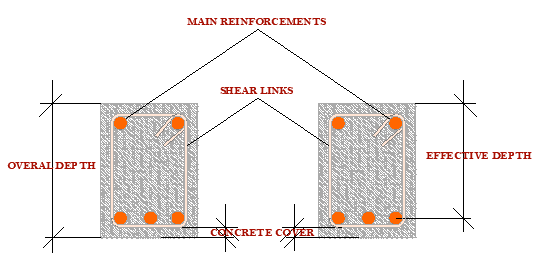CONCRETE COVER IN REINFORCED CONCRETE STRUCTURES
Reinforced Concrete as the composite structural material of reinforcements and concrete is mostly popular construction material in the world due to its properties.
During construction of reinforced concrete structures, always reinforcements are not left exposed to the environment due to different factors, a concrete portion that keep reinforcements away from environmental exposure is what called concrete cover.
In construction of different of structures there is provision of concrete covers of different sizes (thickness), in this post we will look on concrete cover its purpose for application and how its size is desired.
Reasons for provision of concrete cover
1. Provision of thermal insulation and fire protection to reinforcements.
Concrete is one of materials forming reinforced concrete, is most highly fire resistive material in construction.
At high temperature that could be due to uncontrolled fire properties such as strength, modulus of elasticity of different materials are reduced.
At some extend of higher temperature concrete shows more stability than reinforcements (steel) on its properties, some kind of concrete shows their stability at a temperature up Concrete, while steel cannot.
Although steel has high melting point, it shows weakness to its properties such as ductility and strength at high temperatures.
This made engineers to provide concrete cover of certain size to protect reinforcements, where by extent of temperature (time of fire exposure) signifies the size of Concrete cover.
2. Protection from corrosive environments.
Steel reinforcements are more prone to corrosion attacks compared to Concrete, steel reinforcements are more prone to attacks from water (moisture), salts, acids and other chemicals compared to Concrete.
These corrosion attacks or processes reduce ductility property and strength of steel reinforcements which make unsuitable to be used in exposed environment.
Specifications for concrete cover
 |
| BS specification concerning concrete cover |
 |
| ACI standard minimum covers to reinforcements |
How concrete covers are installed
 |
| Cover spacer blocks provide cover to reinforcements |
 |
| Concrete works over reinforcements above steel chairs |





Comments
Post a Comment